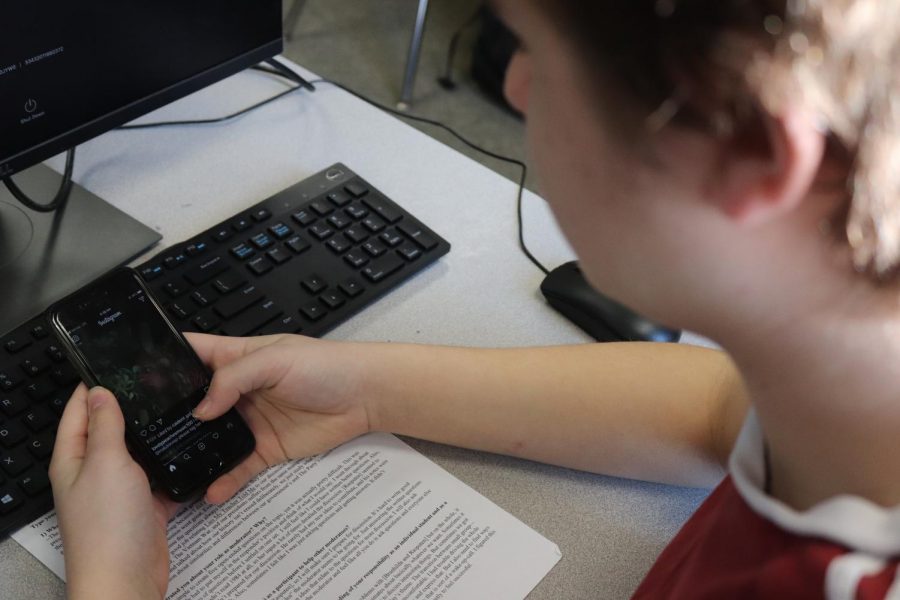Behind the screen
Modern cell phone usage places a lasting effect on the brain and classroom
With the internet in immediate reach, students can find the answers to their questions fast. However, studies involving college lectures allowed three classroom groups: those who could text about whatever they pleased during the lesson, those who were allowed to text if only about the lesson and a control group. The results, published in Computers in Human Behavior, the on-topic groups did 70 percent better than those will free reign.
February 28, 2020
Since the first smartphone sold in 1994, the increase in electronic devices has likewise seen a spike in the counter-productive ways of distraction as well as decreases in cognitive processes as seen from a young age. The impact of access to a mobile screen has changed the cultural landscape in and out of the classroom.
Children in recent decades have been exposed to an amount of technological progression never seen before. According to a study published in JAMA Pediatrics titled Associations Between Screen-Based Media Use and Brain White Matter Integrity in Preschool-Aged Children, increased screen time leads to less expressive language and lower literacy averages. The complex process that affects a child’s cognition includes many parts of the brain that are used to understand and interpret information– all of which are affected by more radiation exposure than seen in past generations.
With this cultural impact, the blue light emitted through screens can suppress the natural release of melanin, the body’s hormone that regulates the sleep cycle. A Harvard medical school research article titled Screen Time and the Brain adds that for teenagers especially, late-night cell phone usage not only reduces time asleep but the amount of REM sleep they receive. REM sleep, also known as Rapid Eye Movement, is crucial for day to day life in order to retain information from the day previous into their memory stores.
In school and out of bed, students without cellular device policies experience more interactions with their smartphones in a day if they so wish. Humans, on average, are not programmed to multitask well. Students with the distraction of a cellphone in class are more likely to take lower quality notes, retain less information and do worse on exams as stated by a Harvard study from the Derek Bok Center for Teaching and Learning.
Maximum potential is reportedly unlikely in a group setting even without each individual having a device as stated by a study published in Educational Psychology by Rutgers University outlining the comparison between test scores and cell phone usage. The main effect of this study shows that cellular distractions diminish long-term retention- as shown by the students sampled having an average of 5% lower grades than if they had not used their phones as a distraction.
Although the evidence is clear against the utilization of mobile devices in a school environment, educators are finding new ways to take advantage of the digital world. The EDUCAUSE Center for Analysis and Research released a study detailing the opportunities that integrating social media and lesson plans can facilitate. While taking advantage of this cultural change, it does not take away from the role screen time has on the brain.
The main contributor to the study, the University of Washington, helped find that students express that they would feel more engaged and connected to school if they were instructed to use their devices. 21% of students said that they wished their professors would give them access to their phones for classroom-oriented activities in order to acquire new and up to date information.
Having a world of knowledge in one’s pocket, student engagement is at risk in the hands of new-age technology.







